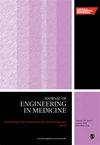Prediction of excess cement residues using a regression model to avoid peri-implant diseases: An in vitro study
IF 1.7
4区 医学
Q3 ENGINEERING, BIOMEDICAL
Proceedings of the Institution of Mechanical Engineers, Part H: Journal of Engineering in Medicine
Pub Date : 2024-04-17
DOI:10.1177/09544119241244513
引用次数: 0
Abstract
Dental implant restorations attached to cement can potentially result in peri-implant mucositis and peri-implantitis if cement residues are present. Effectively predicting and eliminating such dental cement residues is crucial for preventing complications. This study focuses on creating a regression model using the pixel values to predict the Excess Cement Residues (ECR) by employing an octagonal surface imaging approach. A model featuring gingival imitation, ten abutments, and ten crowns was created, and the cemented implants underwent thorough photographic and analytical assessment. The ECR was determined through two distinct approaches: the Computerized Planimetric Method (CPM) and the weighing method. Across ten implants in this in vitro study, ECR varied from 0.3 to 21 mg, with an average of 5.69 mg. The findings reveal a higher amount of ECR on the distal, mesiobuccal, and mesial sides. Utilizing Pearson’s correlation, a coefficient value of r = 0.786 signifies a strong correlation between CPM and the weighing method. The regression model further aids in predicting ECR based on pixel values. The octagonal surface imaging approach not only vividly captures information about ECR in the implant cementation region but also emphasizes the feasibility of ImageJ as an effective tool for detecting ECR. The congruence between CPM and the weighing method results supports the application of the regression model for precise ECR prediction.利用回归模型预测过量骨水泥残留,避免种植体周围疾病:体外研究
如果存在牙科粘结剂残留,附着在粘结剂上的种植牙修复体可能会导致种植体周围粘膜炎和种植体周围炎。有效预测和消除此类牙科粘结剂残留对于预防并发症至关重要。本研究的重点是通过八角形表面成像方法,利用像素值创建一个回归模型,以预测过量水门汀残留物(ECR)。研究人员制作了一个仿牙龈模型、十个基台和十个牙冠,并对粘结的种植体进行了全面的拍照和分析评估。ECR 是通过两种不同的方法确定的:计算机平面测量法 (CPM) 和称重法。在这项体外研究中,10 个种植体的 ECR 从 0.3 毫克到 21 毫克不等,平均为 5.69 毫克。研究结果表明,远端、颊中侧和颊中侧的 ECR 量较高。利用皮尔逊相关性,r = 0.786 的系数值表明 CPM 与称重法之间具有很强的相关性。回归模型进一步帮助根据像素值预测 ECR。八角形表面成像方法不仅生动地捕捉到了种植体骨水泥区域的 ECR 信息,还强调了 ImageJ 作为检测 ECR 的有效工具的可行性。CPM 和称重法结果的一致性支持了回归模型在精确预测 ECR 方面的应用。
本文章由计算机程序翻译,如有差异,请以英文原文为准。
求助全文
约1分钟内获得全文
求助全文
来源期刊

CiteScore
3.60
自引率
5.60%
发文量
122
审稿时长
6 months
期刊介绍:
The Journal of Engineering in Medicine is an interdisciplinary journal encompassing all aspects of engineering in medicine. The Journal is a vital tool for maintaining an understanding of the newest techniques and research in medical engineering.
 求助内容:
求助内容: 应助结果提醒方式:
应助结果提醒方式:


